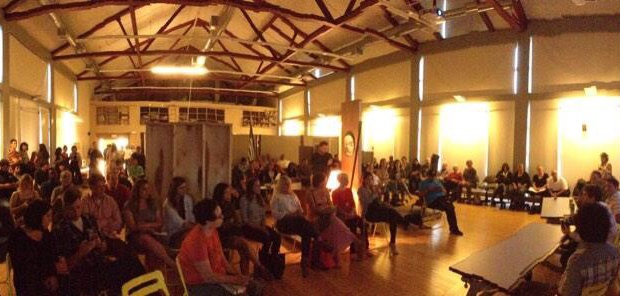Last month UrbanCincy worked with the Niehoff Urban Studio to host our annual fall event. This year the partnership focused on the idea of tiny living, or living in a space that is less than 400 square feet.
According to the information presented at the event, the average tiny home is, on average, about 243 square feet. They can be either completely mobile, as in mounted on a truck, or somewhat permanent such as constructed out of shipping containers. They can also, but rarely are not in the United States, constructed as normal practice with standard materials.
The event saw a larger than expected turnout with well over 100 attendees. Food truck Bistro de Mohr was on hand to serve hungry patrons. The main room hosted a display of different tiny living arrangements.
Presentations were given by a local design firm named Department 7, and Dan Elkin who is developing a tiny home project in Detroit. Following the formal presentations, a panel discussion was held that was moderated by UrbanCincy.
The panel included Vince Sansalone with SAID-DAAP, tiny home owner Natalie Hendricks, artist and designer Joe Hedges, architect and UrbanCincy contributor Bradley Cooper, and University of Cincinnati professor Leah Hollstein. The panel’s discussion was very engaging and ranged from the reasons for developing tiny houses, which includes demographic shifts in the way Millennials view housing, to how tiny houses can fit into the urban fabric of cities. The group also discussed the various challenges for developing ways to make tiny houses legal in cities.
Overall the event was informative and engaging. Participants came away asking for more information about tiny homes and the audience generated good discussions with the panel conversation.
Cooper also distributed a survey about living preferences on tiny houses to those in attendance. Cooper is assembling the information as part of his application to develop a tiny living project through the Haile Foundation’s People’s Liberty Fellowship grant. If you were not able to complete that survey in person, you can do so now online.
UrbanCincy, as a public outreach partner for Cooper’s project, will provide regular updates on his efforts.
